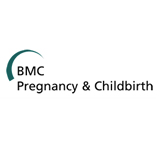
Abstract
Background
We report population-based data on still birth, induced abortion and miscarriage from the Indian state of Bihar to assess the magnitude of the problem and to inform corrective action.
Methods
A representative sample of women from all districts of Bihar with a pregnancy outcome in the last 12 months was obtained through multistage sampling in early 2012. Still birth rate was calculated as fetuses born with no sign of life at 7 or more months of gestation per 1,000 births. Induced abortion and miscarriage rates were defined as expulsion of dead fetuses at less than 7 months of gestation induced by any means or without inducement, respectively, per 1000 pregnancies that had an outcome. Multiple regression models were used to explore possible associations with stillbirths, induced abortions and miscarriages. Multi-level models were developed for the relatively less developed north zone and for the south zone of Bihar to examine contextual factors associated with still births, induced abortions and miscarriages.
Results
Still birth rate was estimated as 20 per 1,000 births (95% CI 15.6-24.5), and induced abortion and miscarriage rates as 8.6 (6.6-10.6), and 46 (40.8-51.3) per 1,000 pregnancies with outcome, respectively. The odds of induced abortion and miscarriage were significantly higher in the south zone (odds ratio 2.53 [95% CI 1.79-3.57] and 1.27 [95% CI 1.10-1.47], respectively). In the multi-level model for the north zone, the odds of induced abortion were higher for women with husband’s having mean years of education higher than the state mean (2.62; 95% CI 1.47-4.69). Among the nine divisions of Bihar, comprising of groups of districts, higher induced abortion rate was associated with lower neonatal mortality rate (R2 = 0.68, p = 0.01).
Conclusions
These population-based data show a significant burden of still births in Bihar, suggesting that addressing these must become an important part of maternal and child health initiatives. The higher induced abortion in the more developed districts, and the inverse trend between induced abortion and neonatal mortality rates, have programmatic implications.
Keywords: Abortion; Bihar; India; Miscarriage; Population-based; Still birth